Jūs turite būti prisijungę
Energijos kaupimas
| Paveikslėlis | Peržiūrėti produkt | Gamintojo nr. | ||||
|---|---|---|---|---|---|---|
| -- |
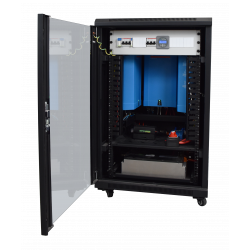
|
DACPOL | NAMAI ENERGIJOS SAUGOJIMAS ESS | PAMATYKITE | -- | Galimas kiekis |
| picture_as_pdf |
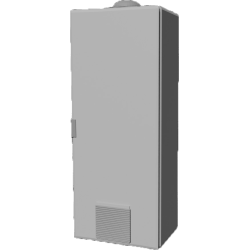
|
DACPOL | ENERGY STORAGE NMC | PAMATYKITE | -- | Galimas kiekis |
| picture_as_pdf |
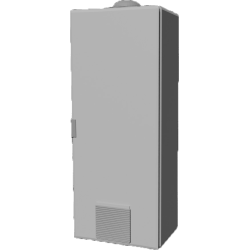
|
DACPOL | ENERGY STORAGE LFP | PAMATYKITE | -- | Galimas kiekis |
| picture_as_pdf |
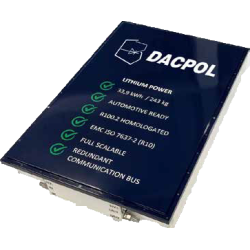
|
DACPOL | Battery Pack for Vehicles | PAMATYKITE | -- | Galimas kiekis |
| picture_as_pdf |
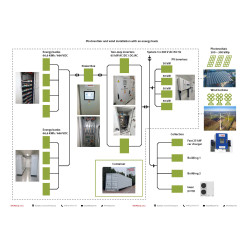
|
DACPOL | Photovoltaic and wind installation with an energy bank | PAMATYKITE | -- | Galimas kiekis |
| picture_as_pdf |

|
TAB | Modulis TAB e.module L5.1 48V | PAMATYKITE | 1026194 | 20 |
Elektrocheminės baterijos arba akumuliatoriai leidžia saugoti energiją lengvai pasiekiamoje formoje. Akumuliatorių privalumas yra aukšta energijos tankis. Energijos tankis yra sukauptos elektros energijos kiekis, išreikštas tūriu arba mase. Akumuliatorių naudojimo trūkumai yra savaiminis išsikrovimas, akumuliatoriaus nusidėvėjimas, kuris pasireiškia parametrų pokyčiais – vadinamasis baterijos senėjimas, ilgas įkrovimo laikas, temperatūros įtaka akumuliatoriui, taip pat kai kuriuose techniniuose sprendimuose – trumpas tarnavimo laikas.
Energijos kaupimo sistemose naudojami du akumuliatorių tipai: švino-rūgštiniai ir ličio jonų.
Energijos kaupimo tipai
Švino-rūgštiniai akumuliatoriai turi apie 70 % efektyvumą (KPD). Jie pasižymi žema kaina, paprastu įkrovikliu ir galimybe trumpam laikui tiekti didelius srovių srautus. Dėl šių savybių juos naudoja nepertraukiamo maitinimo šaltiniuose (UPS). Pagrindinis trūkumas – trumpas tarnavimo laikas (apie 1000 įkrovimo-iškrovimo ciklų) ir jų konstrukcija. Švino-rūgštiniuose akumuliatoriuose elektrolitas yra skysto pavidalo, todėl gali įvykti nutekėjimų ir reikia periodiškai papildyti elektrolitą. Norint išvengti šios problemos, švino-rūgštiniai akumuliatoriai gaminami nepriežiūriniai:
- SLA – Sealed Lead Acid (užsandarinti švino-rūgštiniai akumuliatoriai)
- VRLA – Valve Regulated Lead Acid (švino-rūgštiniai su vožtuvų reguliavimu)
Jie gaminami dviem technologijomis:
- Gelio akumuliatoriai, kuriuose sieros rūgšties vandeninis tirpalas sumaišytas su siliciumo dioksidu ir turi gelio konsistenciją, atliekant elektrolito funkciją. Tačiau tokie akumuliatoriai turi ribotą galimybę tiekti dideles sroves ir retai naudojami galingose sistemose.
- AGM (Absorbed Glass Mat) akumuliatoriai, kuriuose elektrolitas įmirkytas porėtame stiklo pluošto separatoriuje.
Ličio jonų akumuliatoriai (Li-ion) turi apie 94 % efektyvumą. Šie elementai yra vieni lengviausių, todėl naudojami elektronikoje. Vėliau jie pradėti naudoti elektriniuose automobiliuose. Elektromobilių akumuliatoriai yra ilgaamžiškesni (tarnauja dešimtis metų, iki 1800 įkrovimo-iškrovimo ciklų), turi aušinimo ir šildymo sistemas. Jie gali būti įkraunami nuo 0 iki 80 % per 15–30 minučių be ženklaus poveikio tarnavimo laikui. Dėl pažangos elektromobilių srityje ličio jonų akumuliatoriai laikomi stacionarių energijos kaupiklių galimybe atsinaujinančių energijos šaltinių sistemose, kuriose energijos tiekimas yra nestabilus ir nereguliarus.
Nikeliu metalhidridiniai akumuliatoriai (NiMH) turi iki 92 % efektyvumą ir tarnavimo laiką iki 2000 įkrovimo-iškrovimo ciklų. Pagrindinis jų privalumas – be toksiško kadmio. Šie elementai pasižymi aukštu energijos tankiu, talpa ir sumažinta atminties efektu. Trūkumas – negali tiekti didelių srovių. NiMH akumuliatoriai linkę į savaiminį išsikrovimą, tačiau technologijos tobulėja, ir šis efektas palaipsniui mažėja.
Reaktyviosios galios kompensavimas naudojant energijos bankus
Nepertraukiamo maitinimo šaltiniai (UPS) naudojami svarbių įrenginių maitinimui elektros tinklo atjungimo atveju arba jautrių komponentų apsaugai nuo tinklo trikdžių.
UPS turi kondensatorius, todėl iš tinklo traukia ne tik aktyviąją, bet ir reaktyviąją (talpinę) galią. Naujesnėse konstrukcijose naudojamos galios faktoriaus korekcijos (PFC) schemos, kurios mažina harmonikas ir reaktyvią galią, leidžiančios padidinti galios faktorių cosφ pilnu apkrovimu. Alternatyvus sprendimas – fazių poslinkis įėjime, leidžiantis sumažinti talpinę įėjimo galią iki nulio.
Kaip veikia energijos kaupiklis?
Energijos kaupimo sistema susideda iš:
- dvipusio keitiklio – DC/AC ir AC/DC inverterio,
- baterijų bloko – cheminių akumuliatorių rinkinio,
- baterijų valdymo sistemos (BMS),
- programuojamo valdiklio – valdančio algoritmus,
- monitoringo ir vizualizacijos sistemos (GUI – grafinės sąsajos), užtikrinančios stebėjimą ir kontrolę,
- pagalbinių elementų tinklo prijungimui – matavimo įrangos ar, pavyzdžiui, atskirų transformatorių.
Dvipusis keitiklis yra ypač svarbus. Tai DC/AC ir AC/DC keitiklis, kuris valdo akumuliatorių įkrovimą ir iškrovimą bei energijos mainus tarp elektros tinklo ir kaupiklio. Jis turi užtikrinti tinkamus įtampos parametrus ir esant perkrovai – reikalingą srovės piką. Sistema turi sinchronizuotis su tinklu ir išjungimo atveju užtikrinti autonominį darbą. Be to, keitiklis „rūpinasi“ akumuliatoriumi: įkrauna pagal charakteristikas, neleidžia persikrauti ar perkaisti ir apsaugo nuo terminio pablogėjimo. Keitiklis bendrauja su BMS ir užtikrina galvaninę izoliaciją, pvz., naudodamas išėjimo transformatorių.
Fotovoltinės sistemos – energijos kaupikliai didina jų rentabilumą
Įrenginys, didinantis fotovoltinių sistemų rentabilumą – energijos kaupikliai. Vietoj perteklinės pagamintos energijos siuntimo į tinklą, fotovoltinės sistemos su kaupikliu saugo ją baterijose, pvz., nikeliu metalhidridinėse (NiMH) arba vis dažniau ličio jonų (Li-ion). Dėl to energija prieinama bet kuriuo metu, nepriklausomai nuo sąlygų ir tarifų. Energijos kaupiklis suteikia nepriklausomybę nuo tinklo. Tokiu atveju elektros vartojimas faktiškai tampa nemokamas.
Kokie reikalavimai fotovoltinėms sistemoms – akumuliatoriai PV sistemoms
Akumuliatoriai PV sistemose turi atitikti tam tikrus reikalavimus. DACPOL siūlomas kaupiklis turi būti parinktas pirmiausia pagal talpą. Ji turi atitikti bendrą sistemos galią. Rekomenduojama 1–1,5 kWh talpa vienam kilovatui pikinės galios.
Antras svarbus parametras – galia, nustatanti, kiek įrenginių vienu metu gali būti maitinama iš kaupiklio. Kaip PV sistema pritaikoma pastato energijos poreikiams, taip ir akumuliatorius turi būti parinktas analogiškai – tuomet jis gali tarnauti tiek energijos kaupimui iš AEŠ, tiek avariniam maitinimui.
Ne mažiau svarbūs yra akumuliatorių našumas ir efektyvumas. DACPOL namų kaupikliuose naudojami:
- ličio jonų akumuliatoriai su aukščiausiu efektyvumu,
- nikeliu metalhidridiniai akumuliatoriai su šiek tiek mažesniu efektyvumu.
Tokių akumuliatorių kaupikliai užtikrina patikimą fotovoltinių sistemų ir jų maitinamų įrenginių darbą.
Švino-rūgštiniai akumuliatoriai ir energijos kaupikliai fotovoltinėse sistemose
Švino-rūgštiniai energijos kaupikliai nerekomenduojami fotovoltinėms sistemoms. Jie turi trumpą tarnavimo laiką dėl mažo atsparumo dažnam įkrovimo-iškrovimo ciklui. Taip pat greitai praranda talpą aukštoje temperatūroje ir yra dideli, todėl galingi kaupikliai užima daug vietos.



